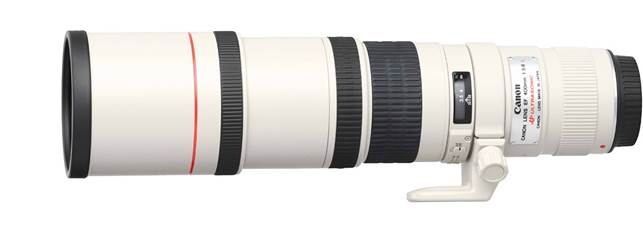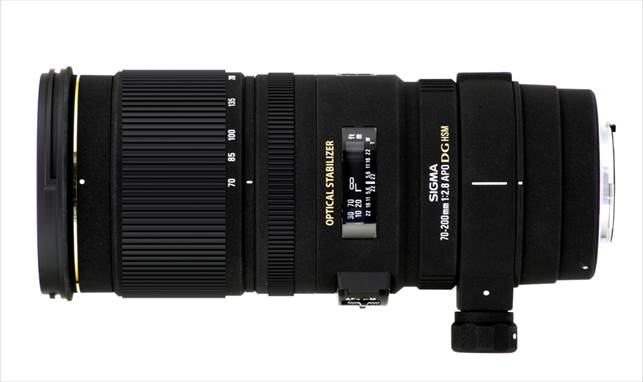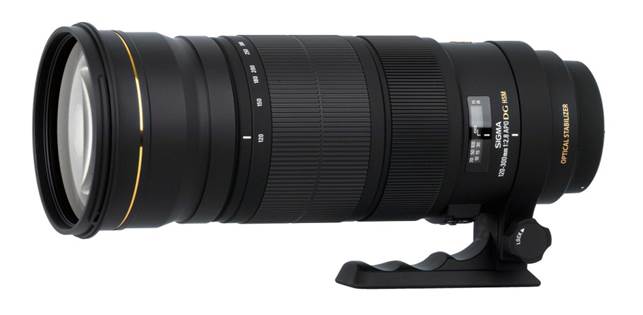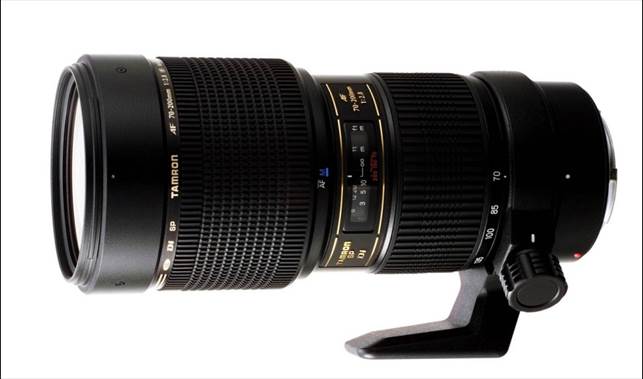Sealing the deal
Build quality is another key factor. All the lenses on test
offer a big step up compared with budget lenses, but some go further than
others. Weather seals are good to have, especially if you’re at an outdoor
event and don’t want your shooting to be hampered because it’s raining. It’s a
common misconception that all Canon L-series lenses feature weather seals, but
only the two 70-200mm f/2.8 lenses and the 70-200mm f/4 IS lens in this group
have dust and moisture seals. Even then, the non-IS 70-200mm f/2.8 lacks a
rubber ring in its mounting plate, to stop moisture leaking through the joint
between the lens and camera body. Seals aren’t fitted to either of the Sigma
lenses or the Tamron lens.
Canon EF 400mm f/5.6L USM
With its focal length of 400mm on a full-frame camera, and
640mm effective reach on an APS-C body, this is a great lens if you need
serious telephoto power. At 1.25kg, it also weighs less than the Canon 70-200mm
f/2.8 lenses, so is light enough for prolonged handheld use.

Canon EF 400mm
f/5.6L USM
The maximum aperture of f/5.6 isn’t massively fast for a
400mm lens; Sigma makes a 120-400mm optically stabilised lens that has a
variable aperture of f/4.5-5.6. Unlike the Sigma, this lens has no stabiliser,
and getting sharp handheld shots at such a long focal length is a major
challenge in anything other than the sunniest conditions.
Autofocus speed is quite pedestrian, even though the lens
features a ring-type USM system. It’s slower than on the Canon 300mm lens, and
very sluggish compared with the other Canon lenses n the group. Image quality
is impressive, but as it’s a prime lens you simply can’t zoom to follow the
action. A 70-200mm f/2.8 lens with a 2x teleconverter is a more attractive
proposition.
|
Verdict
·
Price: $1,340
·
For: Reasonably light for a 400mm lens; good image quality
·
Against: Sluggish autofocus; relatively slow f/5.6 maximum
aperture
|
Sigma 70-200mm f/2.8 EX DG OS HSM
There are plenty of similarities between this lens and the
Canon 70-200mm IS on test. They’re pretty much the same size and weight, and
both have a dual-mode, four-stop stabiliser, great quality glass and sturdy
build quality, and super-fast ring-type ultrasonic autofocus. One notable
difference, however, is that the Sigma lacks weather-seals.

Sigma 70-200mm
f/2.8 EX DG OS HSM
Autofocus is virtually silent and only marginally slower
than on the blistering Canon 70-200mm f/2.8 IS. Stabilisation lives up to its
four-stop claims, and delivers shake-free handheld shots at slow shutter
speeds. Image quality is excellent, with great sharpness and very little
distortion or fringing. Contrast is also generally good, but not quite a match
for the superlative Canon lens at the maximum aperture of f/2.8.
Handling is refined, with very smooth action of both the zoom
and focus rings, while the switches for auto/manual focus and stabiliser modes
have a precise feel. The Sigma is a great lens that gives the Canon 70-200mm
f/2.8 IS a close run for its money, and at less than half the price.
|
Verdict
·
Price: $1,200
·
For: Great image quality, autofocus performance and
stabilisation
·
Against: Lacks weather-seals; not quite as good as the Canon
equivalent
|
Sigma 120-300mm f/2.8 EX DG OS HSM
Couple a big zoom range of 120-300mm with a big maximum
aperture of f/2.8 and you inevitably end up with a big lens, but the Sigma
120-300mm is something of a monster. It’s twice as heavy as the Canon 70-200mm
f/2.8 lens, much longer and fatter, and has an outsized 105mm filter thread.
Unless your other hobby is weightlifting, you won’t want to use this 3kg lens
for long stretches without a monopod or tripod. It’s also the heaviest lens on
test in terms of outlay, at around $2,700.

Sigma 120-300mm
f/2.8 EX DG OS HSM
What it does give you is the holy grail of long telephoto
reach combined with a fast maximum aperture of f/2.8. Other finery includes a
four-stop optical stabiliser with dual modes, ring-type ultrasonic autofocus
and very sturdy build quality. Autofocus is a bit slow, although slightly
quicker than on the Canon 400mm prime lens. Image quality is impressive, but
sharpness could be better towards the edges of the frame.
|
Verdict
·
Price: $2,700
·
For: Class-leading f/2.8 aperture at its long 300mm focal
length
·
Against Big and heavy; sharpness falls off towards corners of
frame
|
Tamron SP AF 70-200mm f/2.8 Di LD (IF) Macro
This is the cheapest 70-200mm f/2.8 lens in the group by
quite a margin. As such, build quality is no match for Canon L-series lenses,
but it’s still a reasonably rugged item that should withstand a few knocks. It
lacks weather-seals, ultrasonic autofocus and optical stabilisation, so the
specifications look a little low-tech.

Tamron SP AF
70-200mm f/2.8 Di LD (IF) Macro
The autofocus system may be of the basic micro-motor
variety, but the motor itself is pretty beefy, though quite noisy as well.
Autofocus is only a little slower than with most of the lenses on test, and
fractionally faster than on the Canon 400mm and Sigma 120-300mm lenses. And
while there’s no full-time manual override, at least the focus ring has a
push-pull mechanism that enables you to quickly and easily swap between auto
and manual focus modes.
Distortions are fairly pronounced, with some noticeable
barrel distortion at 70mm and pincushion at 200mm. Sharpness is very
respectable, even at large apertures, especially in the central portion of the
frame, but there’s a slight lack of contrast when shooting at f/2.8.
|
Verdict
·
Price: $770
·
For: Decent image quality and a fast max aperture at a budget
price
·
Against: Lacks optical stabilisation and ultrasonic autofocus
|